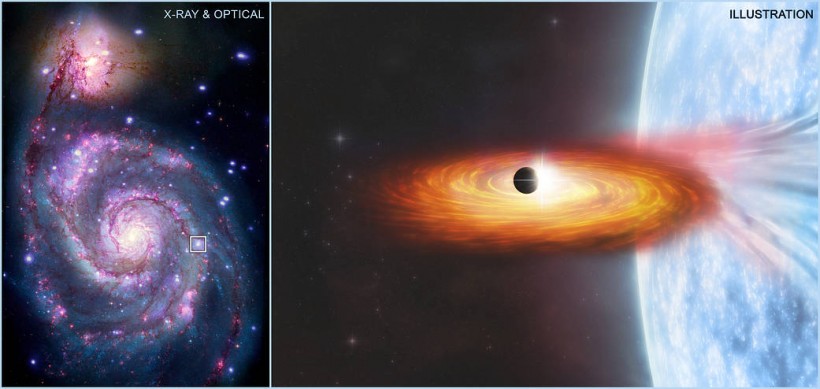Using NASA's Chandra X-ray Observatory, astronomers may have discovered a planet outside of the Milky Way for the first time.
The so-called "extroplanet" is located in the Whirlpool Galaxy, commonly known as M51, a giant spiral galaxy 28 million light-years away.
So far, astronomers have discovered almost 4,000 "exoplanets"-planets orbiting stars outside our Solar System-but they have all been located within our own Milky Way galaxy.
This new planet is hundreds of times further distant than the X-ray source "M51-ULS-1," which it eclipsed. Researchers called the planet an "extroplanet" since it's outside the Milky Way.
The researchers used Chandra and the European Space Agency's XMM-Newton to look for X-ray transits in three galaxies beyond the Milky Way galaxy. Researchers reported their study, titled "A Possible Planet Candidate in an External Galaxy Detected Through X-Ray Transit," in the latest edition of Nature Astronomy.

Signs of a planet transiting a star outside of the Milky Way galaxy may have been detected for the first time. This intriguing result, using NASA’s Chandra X-ray Observatory, opens up a new window to search for exoplanets at greater distances than ever before.
NASA Chandra X-ray Observatory Found Transiting Exoplanet
Tech Radar said astronomers had discovered thousands of probable exoplanets, with over 150 verified, in our galaxy. The transit technique, which involves looking at the quantity of light emitted by a star and looking for dips in the star's brightness, is the most frequent approach for detecting exoplanet candidates.
ALSO READ: NASA Hubble Space Telescope Witnesses Death of a Star; Is This a Warning Sign?
It would suggest that something passed in front of the light source, and if the dips in the light seen from the star have a regular period and are of the same magnitude, you may be sure that a planet is orbiting that star.
Researchers using NASA Chandra X-ray Observatory discovered the exoplanet candidate M51 in the same way, however this time, instead of visible light, as with our existing transit method for stars closer to us, they used x-ray emissions.
X-ray emissions emanate from either a neutron star or a black hole circling a bigger star in a binary system. The companion star has a mass of around 20 times that of the sun and is fueling the accretion disk surrounding its partner, which is releasing the X-rays seen by the researchers.
Exoplanet Twice Saturn's Distance From Sun Takes 70 Years To Orbit
BBC said researchers noticed that the X-ray emissions stopped for almost 3 hours during their observation. Based on previous data, the findings suggest a Saturn-sized planet passing in front of the X-ray source at a distance of nearly twice Saturn's distance from the sun.
However, because this is the first detection of a decrease in X-rays, it's too early to determine if this is a planet or not - and confirmation might take decades. The researchers projected that the planet's orbital period would be around 70 years based on its size and distance.
In a NASA statement, study co-author Nia Imara of the University of California at Santa Cruz noted that they would have to wait decades to observe another transit to prove that they see a planet. She indicated they wouldn't exactly know when to look because of the uncertainty about how long it takes to orbit."
RELATED ARTICLE: Hawaii Astronomers Discover Youngest Exoplanet Yet Via Mauna Kea Telescopes
Check out more news and information on Space in Science Times.














